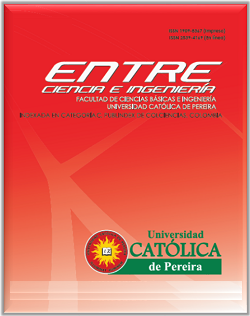Hierarchical control scheme for optimal setting of setpoints in a three-phase separator of a crude treatment train
DOI:
https://doi.org/10.31908/19098367.1163Keywords:
Three-phase separator, Hierarchical systems, Multilayer control, ; Optimization of setpoint, Local Optimization of Objectives, Optimization of Targets in steady state, Predictive Control ModelAbstract
One of the techniques to treat oil from oil wells is to use oil treatment trains to separate the three existing phases: gas, oil and water. One of the equipment that makes up the train is the three-phase separator. This work demonstrates the feasibility of using a hierarchical control scheme for online setting of optimal pressure and temperature setpoints and thus reducing energy consumption in the heat treater. So that the manipulated variables and the set points are within the limits of the safe operation, with this provides an economic and environmental benefit for this plant. The achievement of this optimization is the main contribution of this work. For the development of this work we designed an optimization algorithm based on three hierarchical layers where the first layer refers to direct control (PIDs), the second layer refers to the optimization of steady state objectives (SSTO), the third layer refers to local optimization of objectives (LSSO). For the solution to this problem we resorted to solutions of linear optimization and nonlinear optimization these algorithms are related to the linearized model of the plant, in other works are usually based on the theory MPC (Predictive Control Model). The simulation of the algorithms was done in Matlab and tested in a simulated plant in Hysys using the Active x server connector that connects the two software. In this experiment it was possible to save 30% of the energy consumption. In turn, it was found that it is possible to relate the plant model with the linear and non-linear optimization algorithms, which concluded that the implementation of these algorithms is feasible in this type of plants for process optimization.
Downloads
References
Arnold.K, Stewart.M, “Chapter 6 - Crude Oil Treating Systems”, Surface Production Operations: Design of Oil-Handling Systems and Facilities (Second Edition), Gulf Professional Publishing, pp. 160-193, 1999. https://doi.org/10.1016/B978-0-88415-821-9.X5000-3.
Filgueiras.N, “Modelagem análise e controle de um processo de separacao óleo/água”,tesis, Universidade Federal do Rio de Janeiro, 2005.
P. R. C. Mendes, J. E. Normey-Rico, A. Plucenio, and R. L. Carvalho, "Disturbance estimator based nonlinear MPC of a three phase separator", IFAC, vol 45,pp 101-106, 2012, https://doi.org/10.3182/20120710-4-SG-2026.00060.
Mendes P. R, Carvalho R. L and Normey-Rico J. “Nonlinear predictive control applied to load oscillations damping in a three phese separator”, in Rio Pipeline 2011.
León O. G, Sosa Y. R. and Álvarez C. M, “Alternativas de mejoras energéticas en la planta de tratamiento de crudos de puerto escondido”, Rev. Ingeneiría Energética, vol. XXXVIII, pp. 115–123,2017,DOI: http://scielo.sld.cu/scielo.php?script=sci_arttext&pid=S1815-59012017000200006.
Tatjewski, P. “Advanced control and on-line process optimization in multilayer structures”, IFAC , vol. 11, no. PART 1, pp. 13–26, 2007,https://doi.org/10.1016/j.arcontrol.2008.03.003.
Pan H, Zhong W and Wang Z, “An on-line constraint softening strategy to guarantee the feasibility of dynamic controller in double-layered MPC”, Chinese Journal of Chemical Engineering,Volume 25,pp 1805-1811, 2017, https://doi.org/10.1016/j.cjche.2017.06.010.
Aspentech, “Aspen HYSYS Dynamics”, [Online]. Available: https://www.aspentech.com/en/products/pages/aspen-hysys-dynamics. [Accessed: 15-Nov-2018].
Famisa .R. B, “HYSYS Modelling of a Horizontal Three-Phase Subsea Separator”,Tesis, Norwegian University of Science and Technology , Department of Chemical Engineering,Norway, 2016.
Stewart.M and Arnold .K, “Chapter 1 - Crude Oil Treating Systems”, Emuls. Oil Treat. Equip, pp. 1–80, 2009, https://doi.org/10.1016/B978-0-7506-8970-0.00001-3.
Sayda A. F. and Taylor J. H, “Modeling and control of three-phase gravity separators in oil production facilities”, Proc. Am. Control Conf., pp. 4847–4853, 2007, DOI: 10.1109/ACC.2007.4282265.
Kharoua.N, Khezzar.L, and Saadawi. H, “CFD Modelling of a Horizontal Three-Phase Separator : A Population Balance Approach”, Am. J. fluid Dyn., vol. 3, no. 4, pp. 101–118, 2013, DOI: 10.5923/j.ajfd.20130304.03.
Jekel.T. B, Reindl D. T, and Fisher. J. M, “Gravity Separator Fundamentals and Design”, IIAR 2001 Ammonia Refrigeration Convention & Exhibition, Long Beach,CA, p. 23,2001.
Santos .M. N, Caio. P. R, Mariz .M, Pedro .S, A. de M. Arioston, and L. O. A. Rojas, “Modelagem e simulação de um separador trifásico de petróleo autores”,in 9o Congresso Brasileiro De Pesquisa E Desenvolvimento Em Petróleo E Gás, vol. 25, no. 4,2013 , pp. 628–638.
Perez .N.M “Propuesta Metodológica Para el Diseño y Operación de Instalaciones de Separación y Procesamiento de Crudo ” , tesis maestria, Universiada Nacional de Colombia, 2017.
Cavalcanti .G, “Design and Analysis of Multivariable Predictive Control”,tesis, University of Florida, 2001.
Figueiredo. A. I. L. and Sotomayor A. Z, “Aspectos de controle de um processo de separação água-óleo-gás”, VIII Congresso Brasileiro de Engenharia Química em Iniciação Científica, p. 8, 2009.
Méndez D. E , Sánchez J. y Alzate R, “Control óptimo conmutado de un convertidor CC-CC”, Entre Ciencia e Ingeniería, Año 10 No. 19, página 16-21. DOI: http://dx.doi.org/10.31908/19098367.2793.






 Revista Entre Ciencia e Ingeniería
Revista Entre Ciencia e Ingeniería .png) entrecei@ucp.edu.co
entrecei@ucp.edu.co.png) ISSN (Impreso) 1909-8367 - ISSN (En Línea) 2539-4169
ISSN (Impreso) 1909-8367 - ISSN (En Línea) 2539-4169 Attribution-NonCommercial 4.0 International (CC By-NC 4.0)
Attribution-NonCommercial 4.0 International (CC By-NC 4.0)
.png) Carrera 21 No. 49-95 Av. de las Américas, Pereira, Risaralda, Colombia
Carrera 21 No. 49-95 Av. de las Américas, Pereira, Risaralda, Colombia